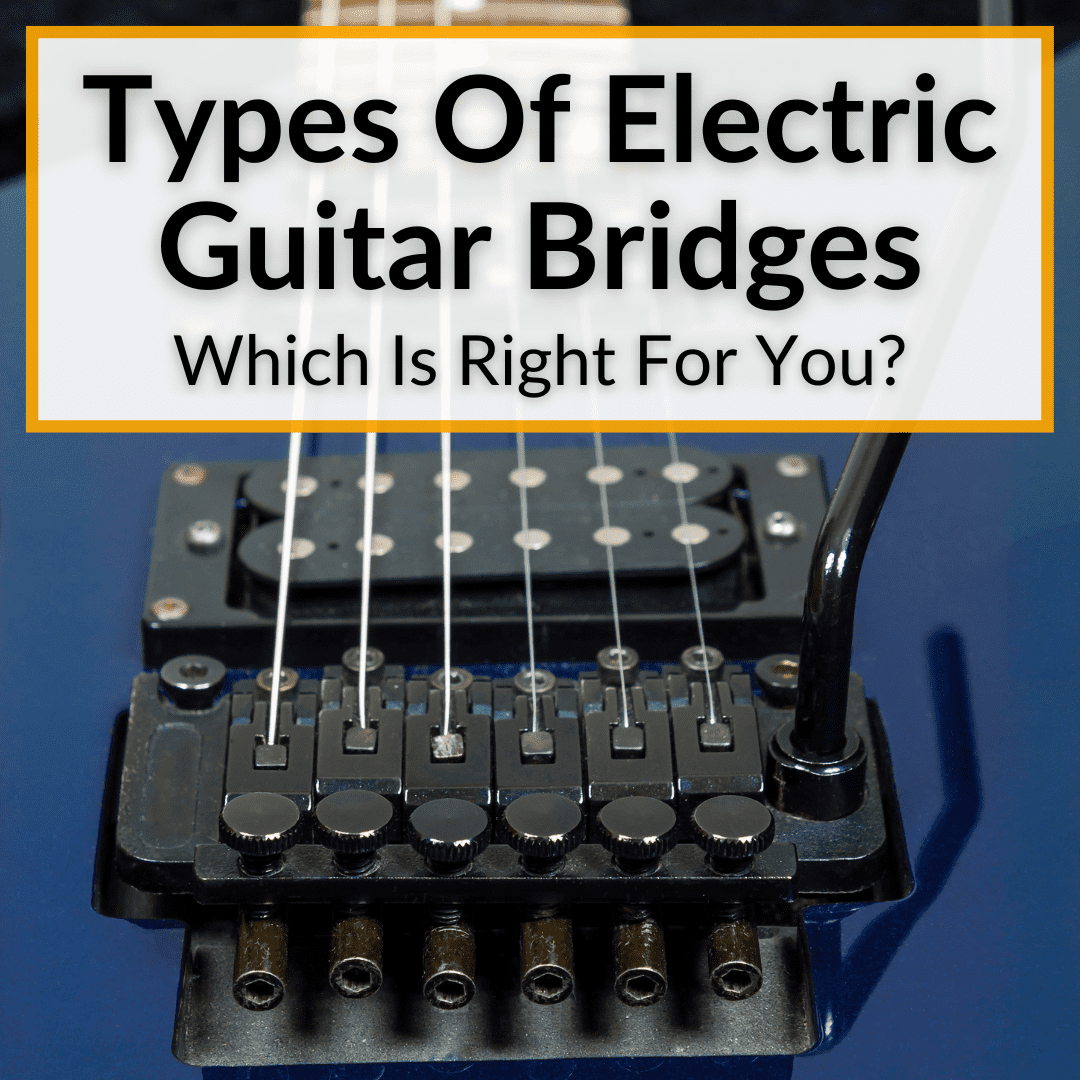 The type of electric guitar bridge you choose makes a huge difference.
The type of electric guitar bridge you choose makes a huge difference.
It will have a major impact on your experience with the guitar, especially as a beginner.
Each type of bridge has distinct advantages and disadvantages.
For beginners, I usually recommend a hardtail bridge.
It is simple. And when you’re learning, simple is good.
But the hardtail bridge does limit what you can do with your guitar. And that may be a dealbreaker for you.
Keep reading to learn all about the different types of electric guitar bridges, including the advantages and disadvantages of each. This will help you figure out which bridge type is right for you.
Table of Contents
Types Of Electric Guitar Bridges
There are four standard types of electric guitar bridges. We will cover them all here, beginning with the simplest and the one I usually recommend for beginners.
Hardtail Bridge
One of the most popular types of guitar bridges is the hardtail. It’s as simple as they come as far as installation and ease of use are concerned, which are the two main reasons both beginner and seasoned guitar players love this type of bridge much.
I love hardtail bridges because they’re well-rounded. They’re stable and do a good job intonation-wise. In my opinion, these elements are far more important than the flashy things you can do on a tremolo bridge. But to each their own.
As for the design, you’ve probably seen a dozen hardtails already. They are more common than any other type of guitar bridge. A piece of metal affixed with (usually) six screws holds six spring-loaded saddles in place.
The minimalist aesthetic is another factor I like. It does not distract from the rest of the guitar body and lets it enjoy its time in the spotlight.
Benefits of Hardtail Bridges
- Simple to install & use: setting your hardtail bridge up is as easy as screwing a metal plate on a piece of wood; if you want to install it in a freshly-made body, drilling a hole for a hardtail is simpler than any other alternative
- Super-easy restringing: get the springs loose one by one, take out your old strings, and place your new ones on top of their saddles; it doesn’t get much easier than this
- Stable performance: your strings will stay in place, and the same can be said about intonation.
Drawbacks of Hardtail Bridges
- Limits your vibrato technique: you can bend the strings with a hardtail bridge somewhat, but you can’t have any kind of vibrato bar on it.
- Jack of all trades but master of none: hardtails don’t particularly excel in any field of performance.
Floating Tremolo Bridge
There are several types of tremolo bridges, and the “floating” one is the best friend a solo guitarist can have. Having a floating tremolo on your guitar will effectively eliminate the need for a whammy pedal, as you’ll be able to make your guitar sing in ways no other bridge would allow.
If anyone ever told you that setting a floating tremolo is a breeze, they lied. You’ll need a range of hex keys, screwdrivers in multiple sizes, and wire cutters. And that’s only if the body of your guitar has a cut-out with the dimensions that can accommodate this bridge.
I have a BC Rich with a floating tremolo, and I enjoy every minute of playing this guitar. I also hate the fact that it’s so needy maintenance-wise that I considered selling it more times than I care to admit.
Benefits of Floating Tremolo Bridges
- Natural, fully controllable tremolo: with a floating tremolo, you’ll be able to pull off vibratos that no pedal could ever recreate
- Exceptional tuning stability: the floating tremolo bridge will keep you in tune, no matter how strongly you bend the strings (unless one of them pops)
Drawbacks of Floating Tremolo Bridges
- Renders the guitar unusable once a string pops: if any of your strings snaps out of tune, it will immediately destabilize all the others; make sure to have a backup guitar for cases like this
- It requires a lot of maintenance: keeping the hardware polished with machine oil is a chore most people hate
Floyd Rose Tremolo Bridge
A tremolo system equipped with a set of locking nuts is the way I’d describe your average Floyd Rose bridge. As far as the guitar community is concerned, this is both the most beloved and hated tremolo system out there, since its unique benefits are just as impressive as its painful drawbacks.
You can’t tune your guitar on the fly with one of these bridges, but it will never fall out of tune. You can’t replace your strings as easily as you normally would with a floating tremolo or a hardtail, but they won’t be under as much stress while you bend them.
Having a Floyd Rose is a give-and-take kind of deal. If you don’t mind adding extra steps to your routine, you’ll be more than satisfied with one.
Benefits of Floyd Rose Tremolo Bridge
- Pitch-perfect intonation: once you’re done tuning, you won’t have to do so again for extended periods of time
- Minimal impact on string lifetime: Floyd Rose is a pivoting system, which doesn’t put too much pressure on the strings, since the bridge is pushed or pulled
- Expands your repertoire of techniques: if you have ever wanted to do a divebomb like Herman Li from DragonForce, you’ll be able to do this and many other cool techniques with a Floyd Rose tremolo bridge
Drawbacks of Floyd Rose Tremolo Bridge
- Restringing becomes a pain: you have to manually unlock the nuts before you can even access the system, which adds a bit of extra (wasted) time to your restringing process
- Vulnerable to human error: your strings won’t fall out of tune, but if you realize that you didn’t tune your guitar perfectly minutes before a show, you won’t be able to fix it in time; have a spare guitar just in case
Decked Tremolo Bridge
If you’re not the type of guitar player who can settle for the “basicness” of a hardtail, but you find floating tremolos and Floyd Roses a bit too complex for your taste, you’ll probably love a decked tremolo bridge.
This type of guitar bridge stands in the golden middle between the others, fixing some of the fatal flaws, while leaving out some of the most prominent advantages.
For instance, your entire guitar won’t instantly fall out of tune as soon as one of your strings break (as is the case with floating tremolos), and you won’t have to go through the arduous process of unlocking the system whenever you need to install a new set (as is the case with Floyd Rose systems).
Benefits of Decked Tremolo Bridges
- More convenience for benders: you’ll stay in tune even if a string snaps; furthermore, the system doesn’t put too much pressure on the strings as you perform bends
- Handles sustain pretty well: decked tremolo systems are designed to be sturdy and empower the guitarist with extra-expressive perks
Drawbacks of Decked Tremolo Bridges
- One-way street: decked tremolo systems can’t be pulled upward
- Hard to repair: decked tremolo bridges feature quite a few tiny hardware parts that most guitarists don’t have at home
Electric Guitar Bridges: Final Thoughts
My first electric guitar has a hardtail bridge. I still love how easy it is to tune and change strings on that one and am grateful I didn’t have to deal with a tremolo when I was still learning the basics.
But these days, I rarely pick that guitar up anymore. My main guitar has Floyd Rose and my other a floating tremolo. I can’t imagine playing with a hardtail anymore, because I use string bends in almost anything I do.
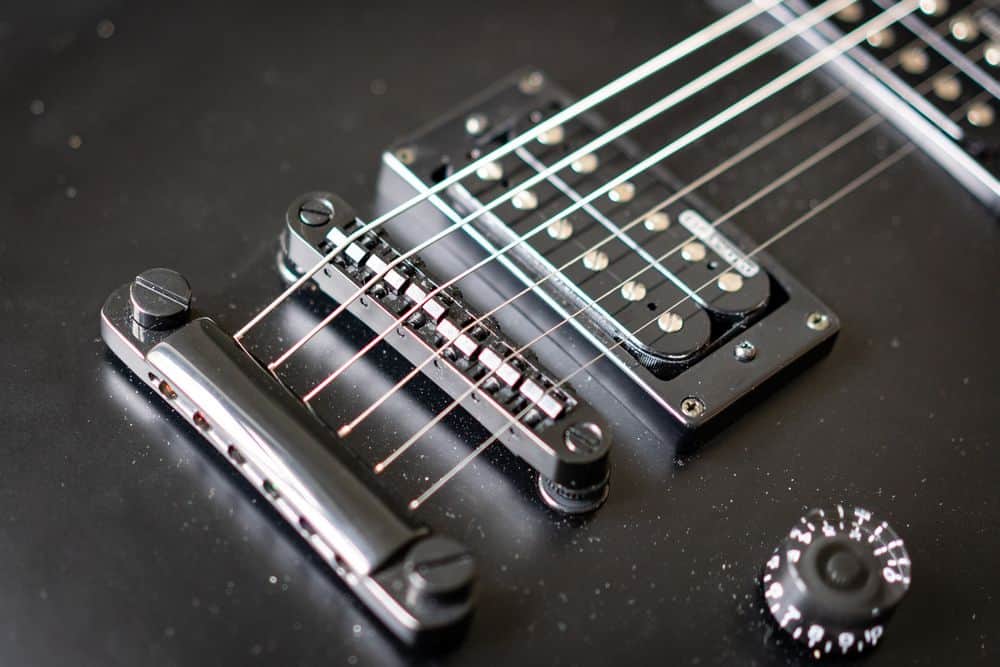
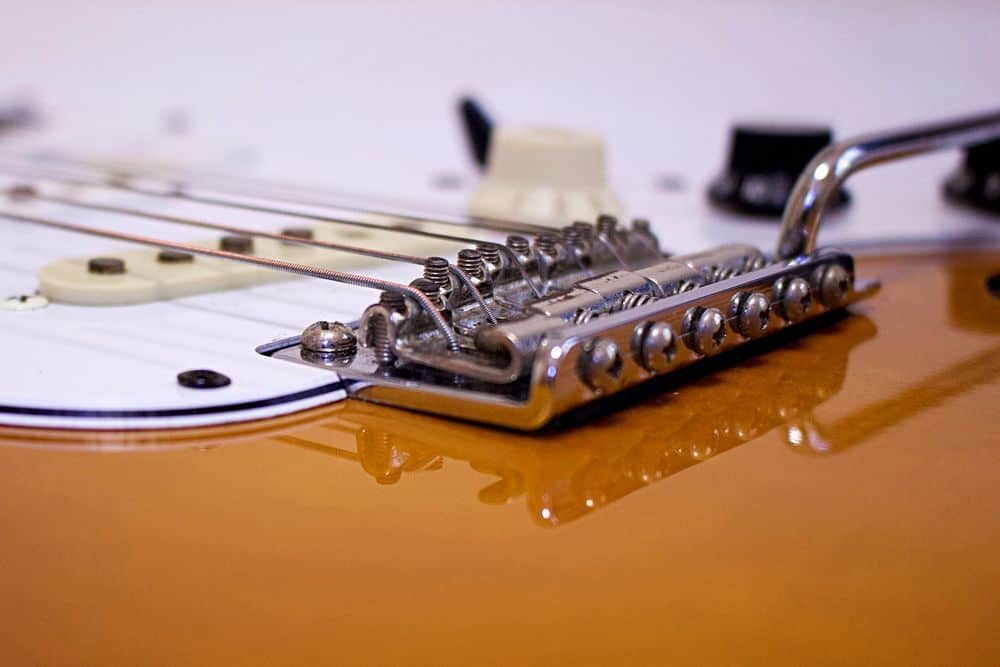
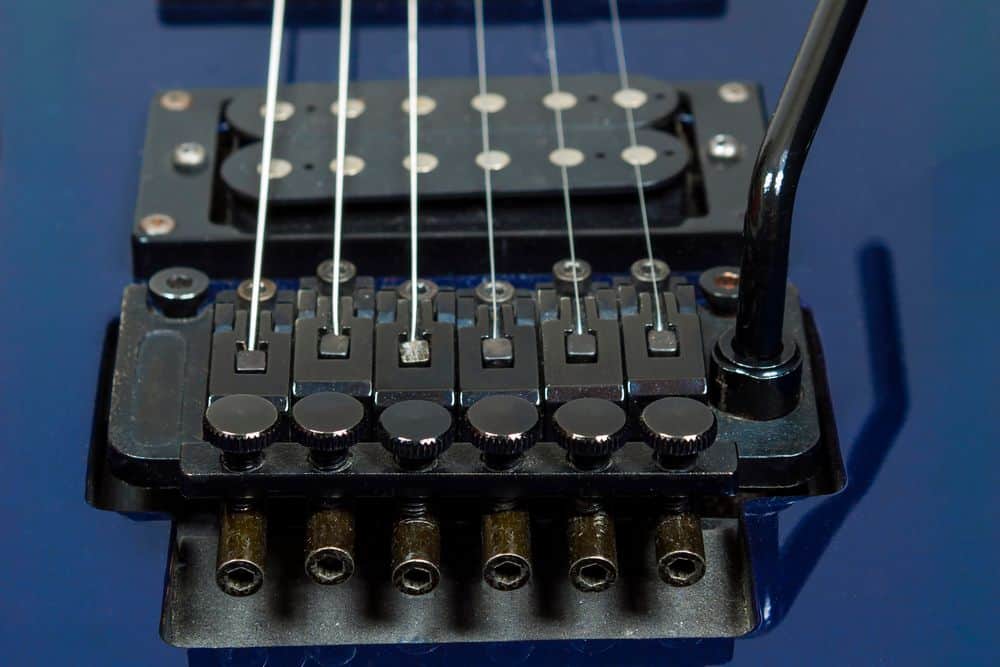
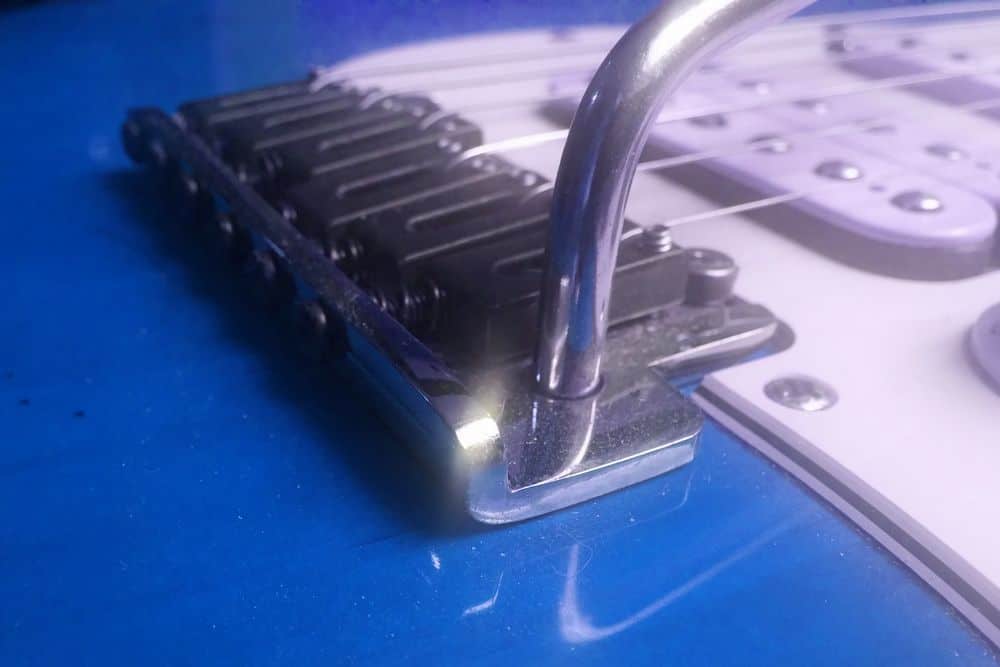
Leave a Reply